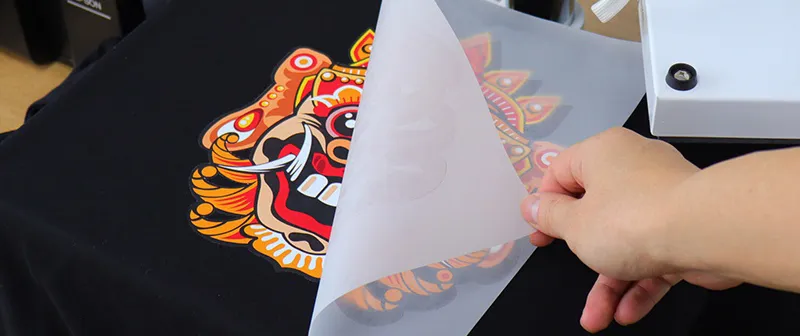The Future of Fashion: Checking Out DTF Printing Innovation in the Fabric Industry
Among these improvements, Straight to Movie (DTF) printing technology has emerged as a promising competitor, using special capacities and opportunities for designers and makers alike. This innovative printing approach has actually triggered passion due to its possible to change typical fabric printing procedures.
Advancement of Fabric Printing
From the ancient civilizations making use of methods like block printing to the digital revolution of today, fabric printing has actually consistently pushed boundaries. As the craft spread to various other parts of the globe, brand-new methods such as display printing and roller printing emerged throughout the Industrial Transformation, changing the fabric industry.
The introduction of electronic fabric printing in the late 20th century marked a considerable change towards even more functional and lasting printing methods. The development of fabric printing showcases an abundant history of imagination, ingenuity, and technical progression in the globe of fashion and design.
Benefits of DTF Modern Technology
With the advancement of textile printing techniques from ancient techniques like block printing to modern-day advancements such as electronic printing, the intro of Direct-to-Fabric (DTF) technology has substantially boosted the performance and sustainability of fabric printing processes. One of the primary advantages of DTF innovation is its capability to straight publish layouts onto textile without the demand for transfer documents, which lowers waste and streamlines the manufacturing procedure. In addition, DTF printing enables better shade vibrancy and information accuracy contrasted to typical approaches, making it possible for fabric suppliers to develop high-grade and complex styles effortlessly.
Moreover, DTF modern technology is known for its convenience, as it can be used on numerous sorts of materials, consisting of natural fibers like cotton, wool, and silk, as well as artificial products such as polyester and nylon (DTF Printing). This flexibility opens a vast array of possibilities for manufacturers and developers to explore various textures and materials, leading to more special and cutting-edge items in the fashion sector. Generally, the implementation of DTF modern technology stands for a considerable advancement in fabric printing, providing numerous benefits that add to the future sustainability and imagination of the industry
Sustainability in Fashion Production
Stressing green methods is paramount in contemporary style manufacturing, lining up with the growing consumer need for sustainable items. In the last few years, the garment industry has actually encountered boosting scrutiny due to its considerable environmental effect, consisting of excessive water use, chemical pollution, and textile waste. As a feedback, numerous style brand names are now incorporating sustainable techniques into their production procedures to decrease harm to the atmosphere.
Sustainability in vogue production includes numerous aspects, such as using organic and recycled products, reducing energy usage, applying ethical labor methods, and advertising openness throughout the supply chain. In addition, improvements in modern technology, like DTF printing, offer opportunities to additionally boost sustainability in fabric production. This technology enables accurate printing on materials, minimizing ink wastefulness and water use compared to traditional printing methods.
Style Flexibility and Personalization

Moreover, DTF printing promotes personalization on a scale previously unattainable, enabling customized clothes and distinct pieces customized to private preferences. Customers can now proactively take part in the design process, creating garments that mirror their style and personality. This customization not just enhances the consumer experience yet also promotes a sense of exclusivity and originality in a market filled with mass-produced clothing. Generally, DTF printing modern technology transforms the design landscape in the fabric industry, using endless opportunities for creative expression and tailored fashion.
Impact on Supply Chain & Market Trends
DTF printing innovation in the fabric sector is improving supply chain characteristics and influencing market patterns with its performance and modification capacities. By enabling on-demand printing and eliminating the need for big stocks, DTF innovation enhances the supply chain procedure. Makers can generate things as required, lowering waste and storage space prices. This just-in-time manufacturing version additionally enables quicker action my sources to market needs and patterns, causing a much more active and responsive supply chain.
In addition, the modification capacity of DTF printing technology is revolutionizing the marketplace patterns in the textile industry. Customers progressively seek customized and distinct items, and DTF website link enables brands to supply custom designs cost-effectively. This modification ability not only improves customer satisfaction yet additionally opens brand-new chances for businesses to deal with niche markets and separate themselves from competitors. As an outcome, DTF innovation is driving a change towards even more innovative and customer-centric techniques within the textile sector, forming the future of style.

Final Thought
To conclude, DTF printing technology is changing the textile market by using various advantages such as layout freedom, personalization, and sustainability. This innovative innovation is improving the future of style production, impacting supply chains, and driving market patterns in the direction of extra reliable and environmentally friendly techniques. As the sector continues to evolve, DTF printing will play an important function fit the means fabrics are generated and eaten in the years ahead.
From the old human beings making use of strategies like block printing to the electronic change of today, fabric printing has actually consistently pressed limits. As the craft spread to other parts of the world, new methods such as display printing and roller printing arised throughout the Industrial Change, changing the fabric market.
The intro of digital textile printing in the late 20th century noted a substantial change towards even more sustainable and versatile printing approaches.With the development of textile printing techniques from old techniques like block printing to contemporary developments such as digital printing, the intro of Direct-to-Fabric (DTF) innovation has significantly boosted imp source the efficiency and sustainability of textile printing processes (DTF Printing).In response to the essential change in the direction of sustainability in fashion manufacturing, the adoption of innovative modern technologies like DTF printing not only addresses environmental problems however also opens up methods for unequaled style freedom and modification in the textile sector